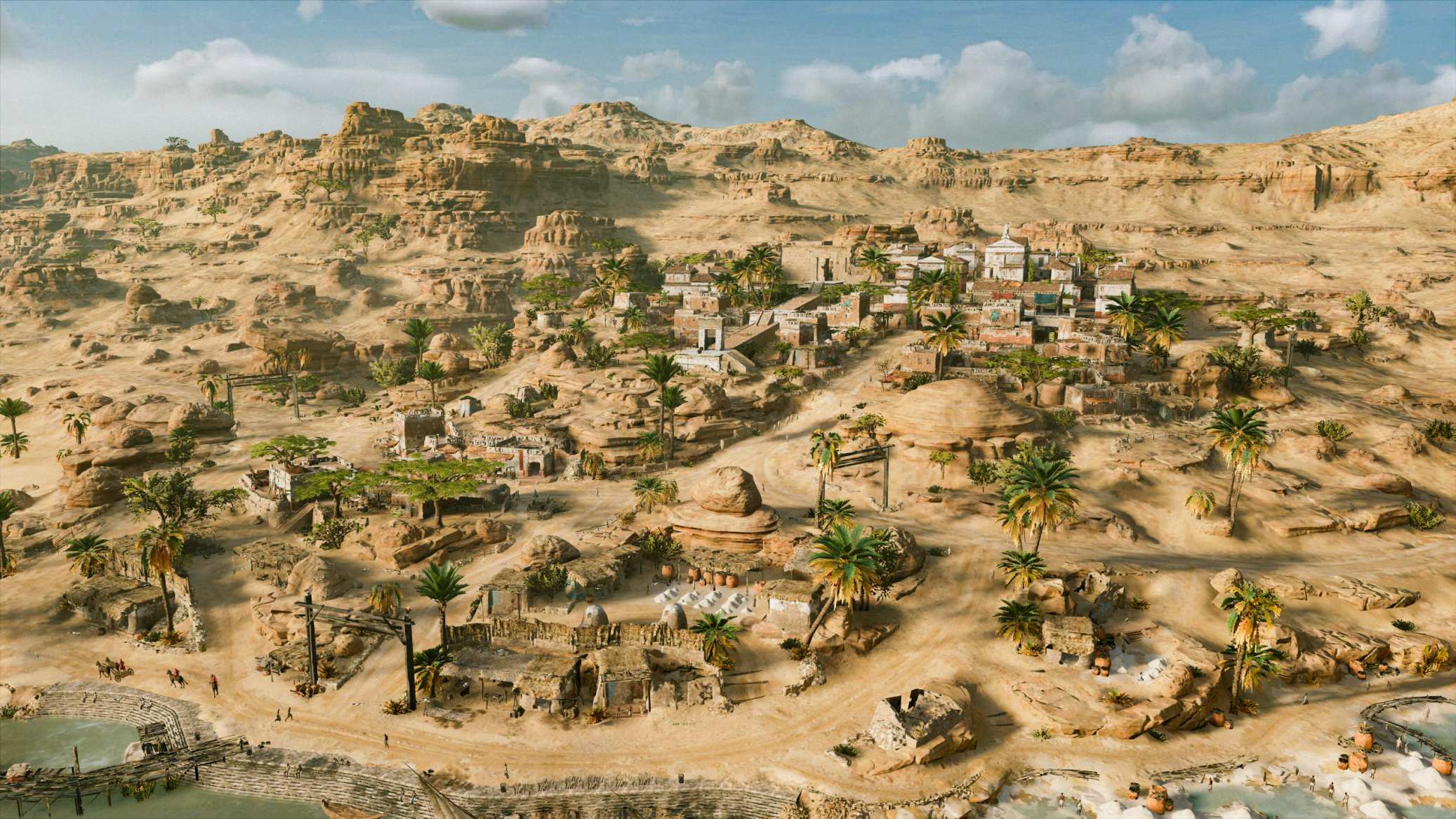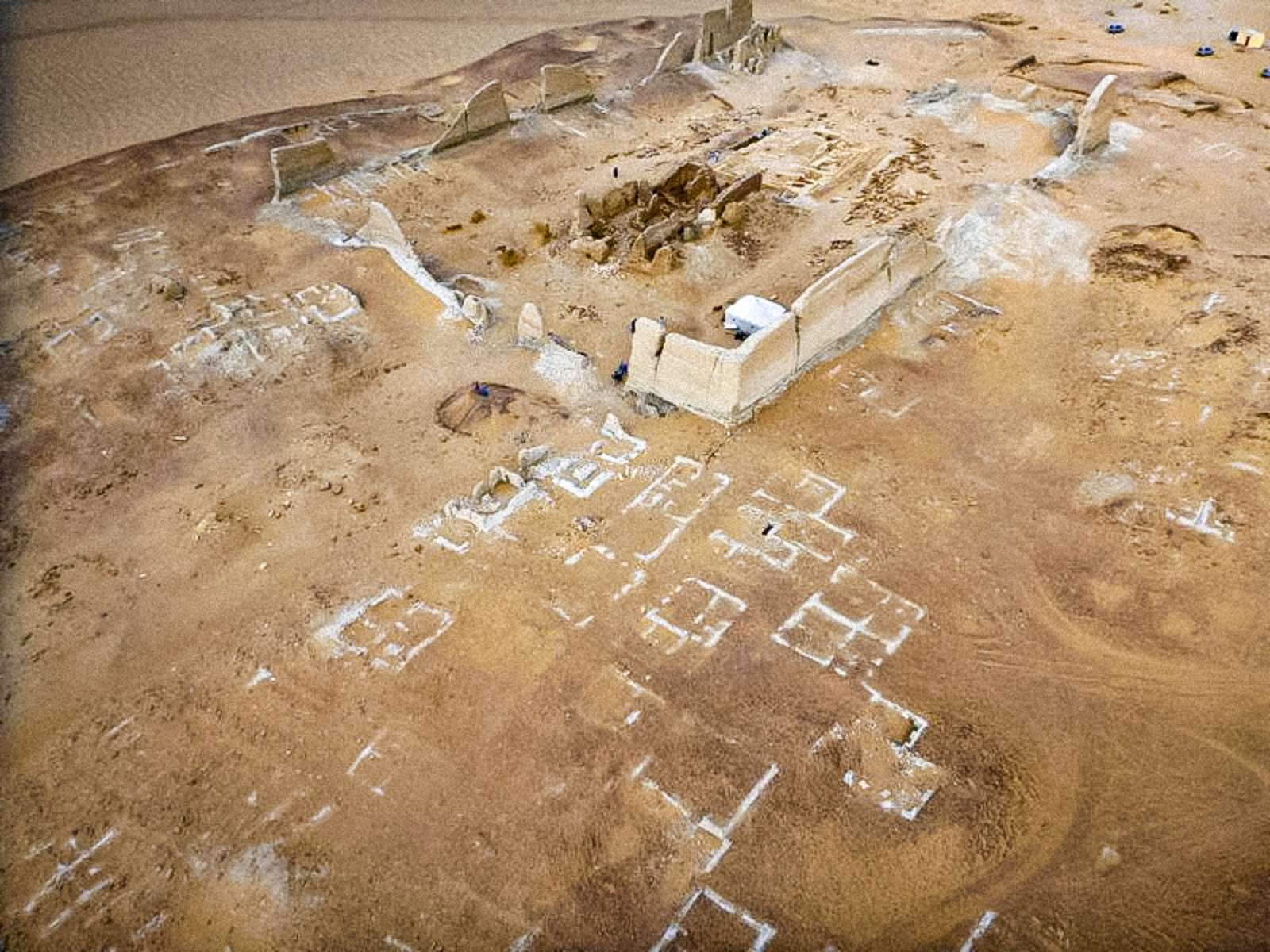The name Soknopaiou Nesos (Ancient Greek: Σοκνοπαίου Νῆσος), which translates to “The Island of Soknopaios”, is a contraction of the longer Egyptian name tȝmȝy Sbk nb Pay pȝ nṯr ʿȝ, meaning “The Island of Sobek, the lord of Pai, the great god”. It was an ancient settlement in the Faiyum Oasis, situated a few kilometers north of the ancient Lake Moeris (now known as Lake Qarun).

The area, now known as Dimeh es-Seba (Arabic: ديمة السباع), possibly signifying “Dimeh of the Lions” was an important religious site with a prominent temple devoted to the god Soknopaios. This deity was represented in the form of a crocodile with a falcon head, from which the name of the town was derived. Soknopaios is the local Hellenistic version of Sobek, the major god of the Faiyum area.
Papyrological evidence suggests that Soknopaiou Nesos was established in the 3rd century BCE as part of the reclamation project of the Faiyum carried out by the first Ptolemies and was abandoned in the mid-3rd century CE. However, archaeological evidence has recently revealed that the settlement was occupied again in the 4th-5th centuries until the end of the Byzantine period, with a concentration of activity primarily in the vicinity of the main temple.

The archaeological site of the settlement is an oval shape, crossed by a 400m long paved dromos. This was intended to be a processional road, connecting the temple’s southern entrance with a staircase, and also dividing the settlement into two parts, east and west.
Lions statues and possibly two kiosks were set up on the road, as well as some stairs and two tunnels, which allowed people to pass from the eastern to the western quarter.

This impressive barrier formed a stunning stage for ritual processions that occurred more than 150 days a year, due to its various building phases and its extension toward the south as the settlement expanded in the Roman period.
The primary archaeological proof lies in the vast light-colored mud-brick temenos located Northwest, with its walls reaching a maximum height of 15 meters in some places, having an unusual rectangular shape. Within the enclosure, several structures are still visible, mainly constructed from mud bricks and stone masonry.

The primary temple, situated in the middle of the temenos, was the site of an array of deities, including both Soknopaios and the synnaoi theoi, such as Isis Nepherses and Soknopiais. The temple was composed of two contiguous structures oriented along the North-South axis and aligned with the dromos.
They formed one temple during the Roman period and were connected by an open-air courtyard. The Southern building, constructed from brown limestone and mud bricks, is the well-preserved of the two and is believed to have been built in the early Hellenistic period.
The Northern temple, however, is badly deteriorated, standing at only 1.60 m tall. It is made of regular yellow limestone blocks and is thought to have been erected in the Ptolemaic era or early Roman period. It was the primary sanctuary for the worship of the gods, while the Southern building likely functioned as a propylon. The North temple was likely restored sometime in the first half of the 2nd century CE.
The area of Soknopaiou Nesos in Assassin’s Creed Origins is a place of fascinating history. It is located in the North of Egypt and was once a flourishing trade hub. It is a great spot to explore and learn about the culture of the region.
In the 1st century CE, a large opposing temple was constructed against the rear wall and then refurbished in the 2nd century. An astonishing, scaled-down stone architectural representation of the counter-temple in the ratio 1:20 was uncovered inside it.
Within the temenos area are various mud-brick constructions: dwellings of priests, workshops, management buildings, minor sanctuaries, and chapels. Outside of the temenos, to the North, East, and West, multiple constructions of mud brick and rough native stones are still visible.
We hope you found our exploration of Soknopaiou Nesos, the ancient city in the desert of Fayum, to be fascinating. This mysterious settlement, established in the 3rd century BCE and abandoned in the mid-3rd century CE, offers a glimpse into the rich history and architectural heritage of the region.
From the mud-brick structures to the diverse range of buildings, including dwellings, workshops, and sanctuaries, Soknopaiou Nesos presents a unique opportunity to delve into the past.
After reading about the Soknopaiou Nesos, read about 16 ancient cities and settlements that were mysteriously abandoned.



